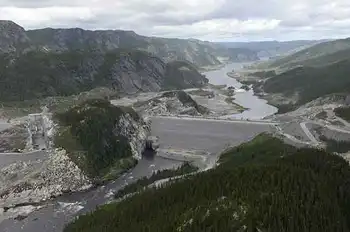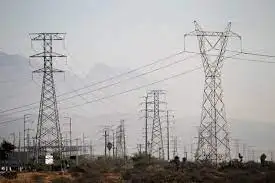Ontario asked to turn down power expansion
By Toronto Star
Electrical Testing & Commissioning of Power Systems
Our customized live online or in‑person group training can be delivered to your staff at your location.

- Live Online
- 12 hours Instructor-led
- Group Training Available
Robert Franklin, then-president of the province-owned utility, warned of crippling power shortages by the mid-1990s if the new plants were not built. He called this a "certain, irrefutable fact."
Two years later the province found itself knee-deep in an economic recession. Electricity consumption fell. Instead of power shortages, Ontario Hydro was faced with surpluses. By 1993, just four years after making its ambitious proposal, the utility scrapped its controversial plan.
Fast-forward two decades: The province's manufacturing sector is in decline, high energy prices have focused attention on conservation and a spreading global financial crisis threatens to drag an already-struggling Ontario into recession.
Meanwhile, the Ontario Power Authority is trying to get approval for a 20-year power system plan that assumes electricity demand in the province will grow about 1 per cent annually. It hopes to erase that growth over the next 10 years through conservation and greater emphasis on energy efficiency, but beyond 2015 demand starts to creep up again.
The agency is calling for an investment of $26 billion to beef up the province's nuclear fleet – a combination of refurbishing old reactors and building new ones. Billions more are being spent on new natural-gas plants and renewables such as wind, but mostly to replace coal-fired power plants being shut down over the next six years.
Some observers worry that history is repeating itself and that with a recession looming, the 20-year plan is more expansive and expensive than it needs to be.
"The potential parallels are enormous," said Mark Winfield, a professor of sustainable energy policy at York University. "We're seeing exactly the kind of pitfalls that the 1989 planning process fell into."
Even before the current credit crunch, energy consumption began falling in Ontario. The Independent Electricity System Operator, which manages electricity supply and demand in the province, says consumption fell 1.7 per cent in 2006 – the year the power authority conducted its forecast – and dropped an additional 0.5 per cent in 2007.
The system operator is predicting a fall of about 1 per cent this year and another 1 per cent in 2009. So far, domestic demand for the first eight months of this year is down 2.2 per cent. Even taking energy conservation into account, the drop in demand over that four-year period has been far more than the power authority's forecast.
"And that was before Wall Street imploded," said Keith Stewart, an energy expert at WWF-Canada. "We're already tracking about 10 terawatt-hours below the (20-year plan) prediction pre-crisis. That's equivalent to three Pickering-sized reactors."
Adam White, president of the Association of Major Power Consumers in Ontario, said the power authority needs a reality check.
"They're forging ahead with a proposal on a plan based on a forecast that's wrong and getting worse," said White, adding that in the past two years alone we needed 700 megawatts less than initially predicted – equating to an investment of about $1.5 billion. "If we don't need it, for God's sake let's not build it."
Electricity demand isn't just falling in Ontario. Major Asian markets, such as China and Taiwan, have reported unexpected drops in electricity demand over the past few months as United States economic woes spread overseas.
In the U.S., it appears electricity consumption is likely to fall for the same reasons gasoline and oil consumption declined. "Consumers who are impacted by the recent economic turmoil – maybe a lost job or other reduction in income – may decide to conserve electricity to lower their utility bill," said Tyler Hodge, an official with the U.S. Energy Information Administration.
Hodge said U.S. residential electricity consumption fell in the first half of 2008 compared with last year and the agency is expecting demand to fall further next year because of the weaker U.S. economy.
A fall in U.S. electricity demand could also affect the need for power production in Ontario, as the province has benefited lately from higher power exports. In fact, electricity exports to the U.S. are up 75 per cent this year compared with 2007.
"So if demand is going to drop there as well, which seems likely if the economy crashes, then we may not have a market for those exports," said WWF-Canada's Stewart.
The weakening economy and the fact that power consumption in the province has fallen over the past two years have local electric utilities questioning the power authority's assumptions. The Electricity Distributors Association, in a letter to the Ontario Energy Board, said it wants to know if the power authority plans to review and, if necessary, revise its forecast.
Energy and Infrastructure Minister George Smitherman recently directed the power authority to review a portion of its 20-year plan with an aim to beefing up renewables and speeding up energy conservation. The review provides an opportunity to take a second look at the demand forecast, said Charlie Macaluso, president and chief executive of the distributors association.
Macaluso also wants to know if the plan takes into account other technology trends, which despite short-term economic woes might signal higher demand over the medium and long term.
"What about electric vehicles, which by various accounts are likely to be popular before this load forecast cycle is over?" he said. "Have we taken into account that impact in terms of the demand that might be created in such a new economy?"
The man overseeing the power authority's 20-year plan, Amir Shalaby, isn't so concerned about the short-term ups and downs of electricity demand. He said it's a mistake to make knee-jerk reactions based on short-term trends.
"The minute you see a bump in the road and abandon everything, that's not very good," said Shalaby, adding that had Ontario Hydro not completely killed its 1989 plan, which he also helped design – the province's electricity system would be in better shape today.
"The game should not be trying to forecast and project exactly what will happen in terms of demand over the next little while, but rather build a plan that is robust and flexible."
But if electricity consumption did continue its decline, experts said the province has enough flexibility in its power system to adapt. The bigger question is what domino would fall first?
Would the government cancel plans to build new reactors at Darlington or refurbish reactors at Pickering and Bruce? Would fewer natural gas plants get built?
Would it cut back on renewables and conservation? That's unlikely, given the current policy climate and public concerns over global warming.
Many environmentalists argue that nuclear projects should be the first to be abandoned because of the long time it takes to build or refurbish new reactors and because their large price tag will be even more difficult to finance during a global credit crunch.
Better, they maintain, to lower risk by investing in increments – in other words, raise the bar on conservation, energy efficiency, renewables, and waste-energy recovery, while improving the transmission system with smart-grid and emerging energy-storage technologies.
But if demand does drop considerably over the next few years, enough to alter the province's current course, it's more likely the power authority would tweak other parts of its plan first.
"We can advance the closure dates for the coal plants, and there are a lot of natural gas plants in the plan where we can change the in-service dates," said Shalaby.
"The fact that there's a new nuclear plant in the plan doesn't mean the entire plan is not flexible."











